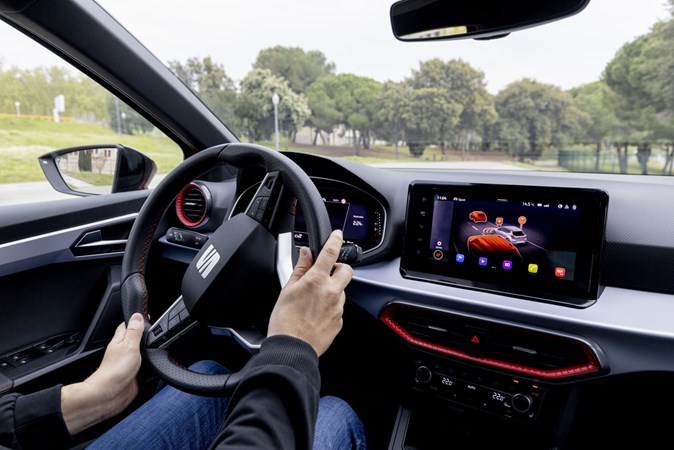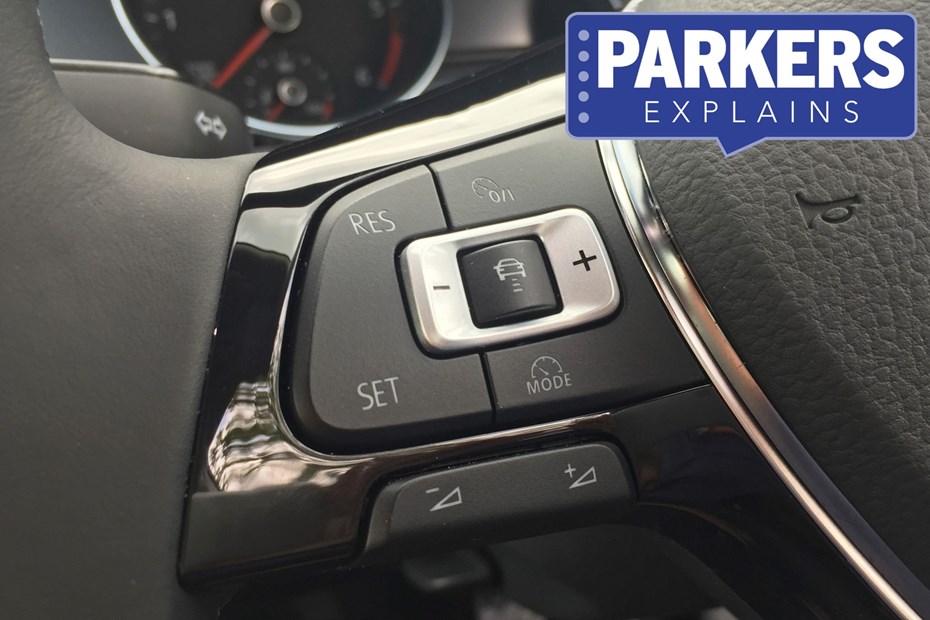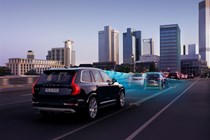Adaptive cruise control (or radar-guided cruise control) is a driver aid that automatically adjusts the speed of your car in order to maintain a safe distance to the vehicle in front. At the touch of a few buttons, drivers can configure their ACC to ensure they remain at a safe distance to the car in front at all times.
Cruise control has been around for decades and in its basic form it’s now fitted to the majority of new cars as standard equipment. It’s a simple technology that maintains a speed of your choice until you either cancel it or hit the brakes.
Most people use it to keep a steady 70mph on the motorway – sometimes with lane assist – so they can rest their feet and relax into a longer journey. However, traditional cruise control can’t deal with traffic ahead – you need to step in if you see an obstruction and hit the brakes.
That’s where adaptive cruise control, also known as active cruise control or ACC, comes in. This is a new technology enjoying widespread adoption across new models, either as standard or as an optional extra, with capabilities to handle slowing down as well as speeding up.
How does adaptive cruise control work?
On a completely clear road, adaptive cruise control works the same as a normal cruise control set-up. It continuously monitors the speed of the car, adjusting power delivery to maintain a pre-determined speed set by the driver.

But when there’s other traffic around, ACC can be set to match the speed of a car in front. In most models, a radar transmitter on the front bumper sends information to the car’s computer about how far away the car in front is. It then corrects the amount of power from the engine (or electric motor) to maintain a consistent distance.
If the car in front slows down, your car will also slow down automatically, matching their speed. In some cars the system can go right down to a stop, and then pull away again when the traffic begins to move. This is often called ‘traffic jam assist’ or similar.
The driver can set the target speed, and when the car in front moves away, the ACC system will accelerate up to that speed. The driver can also set how close they want their car to follow the car in front, up to a minimum of about two car lengths in most cases.
Some cars even have steering assist, which can keep you in your lane automatically. You have to keep your hands on the wheel, but the car will gently steer itself to stay within the white lines. This is often called ‘traffic assist’ when it is designed to stop, start and steer at slow speeds – most widely available on cars from BMW and Mercedes.
Do I need adaptive cruise control?
If you do a lot of motorway miles, then adaptive cruise control could be a very worthwhile option to select when buying a new car. By allowing you to take your foot off the accelerator pedal, it can help reduce fatigue on long journeys, keeping your mind focussed and your reactions sharp.
Adaptive cruise control can assist with braking, too. By alleviating some of the pressures of continuous small braking movements, ACC can make traffic jams more relaxing. However, this will only apply in automatic cars at slow speeds – in a manual you will still have to change gear and use the clutch yourself.
Does my car have adaptive cruise control and how do I use it?
If you’re buying a new car, check the list of standard equipment and the optional extras in the brochure to see which versions have this function. If not, you may be able to add it as an extra for a fee.

If you’ve already got a car but you aren’t sure if it has ACC, check to see if you can set the distance your car remains behind the car ahead. If you can, then it’s an adaptive system. Cruise control buttons are usually found on a stalk behind the wheel, or on the wheel itself. You can check your car’s manual to find out what each individual button does and how to use them.
Which cars have adaptive cruise control?
Adaptive cruise control became available following the advent of the Distronic feature on the Mercedes S-Class in 1999. Before then, earlier systems provided distance warnings or could control engine speed, but not apply the brakes – a crucial element for the system to work effectively in traffic.
MINI was one of the first to offer adaptive cruise on a small car, while Ford was in the first wave to offer it in an affordable, popular car – the Fiesta. It has become as widely available as electric windows or air conditioning, and the system is now available on humble family hatchbacks such as the Ford Focus, Volkswagen Golf and Skoda Octavia.
It’s one of the building blocks of autonomous self-driving technology, so expect this tech to continue proliferating.
Just so you know, we may receive a commission or other compensation from the links on this website - read why you should trust us.








